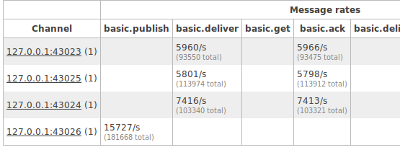Growing Up
Some three and a half years after we launched RabbitMQ, we have this week released RabbitMQ 2.0.
This means some big changes. The most important of these is our new Scalable Storage Engine. RabbitMQ has always provided persistence for failure recovery. But now, you can happily push data into Rabbit regardless of how much data is already stored, and you don't need to worry about slow consumers disrupting processing. As the demands on your application grow, Rabbit can scale with you, in a stable, reliable way.
Before introducing RabbitMQ 2.0, let me reiterate that as Rabbit evolves you can count on the same high level of commitment to you as a customer or end user, regardless of whether you are a large enterprise, or a next-gen start-up, or an open source community. As always, get in touch if you need help or commercial support.
